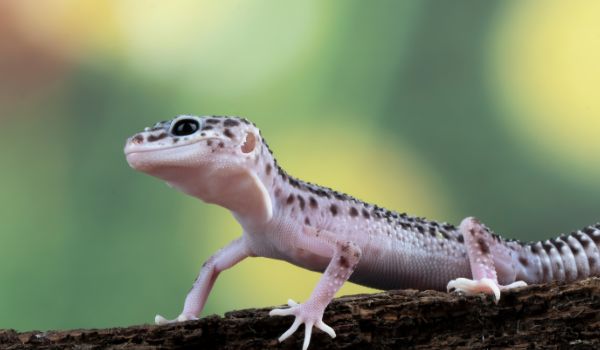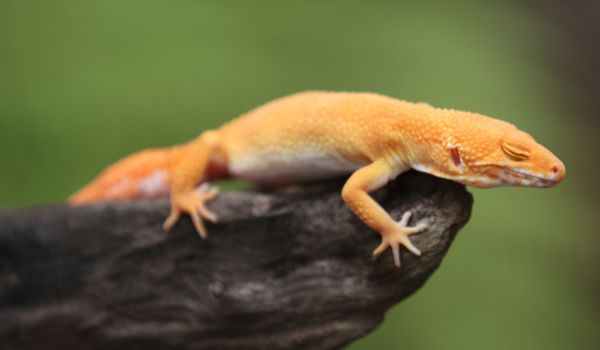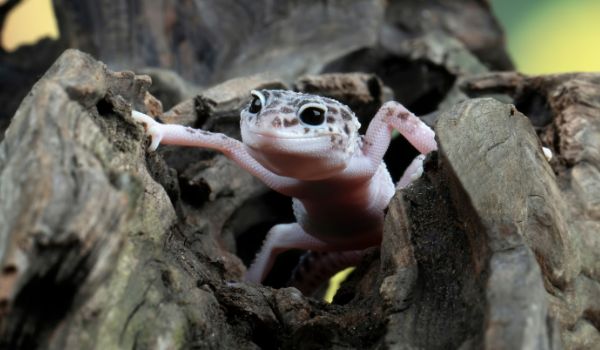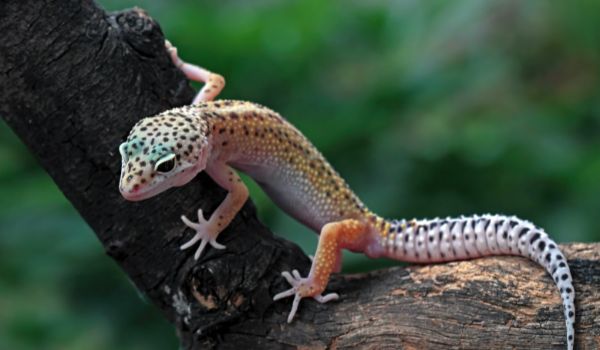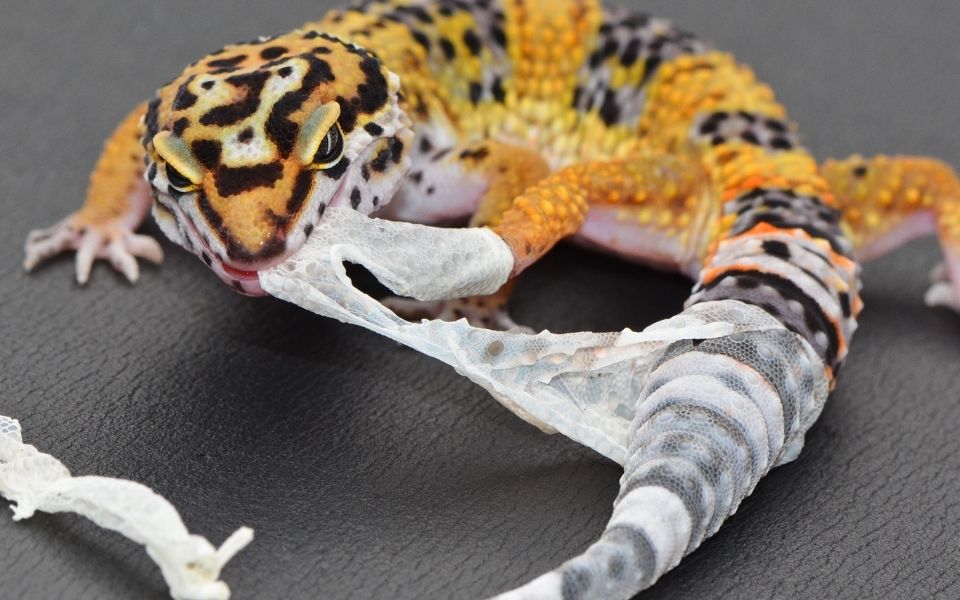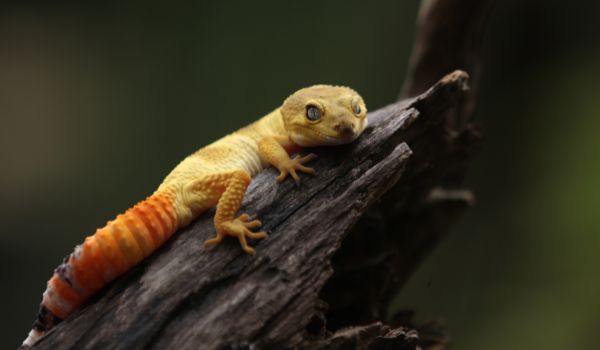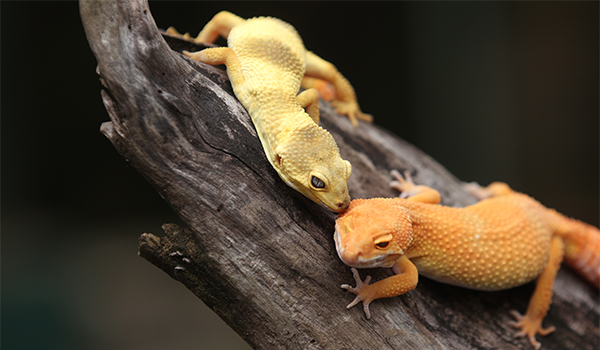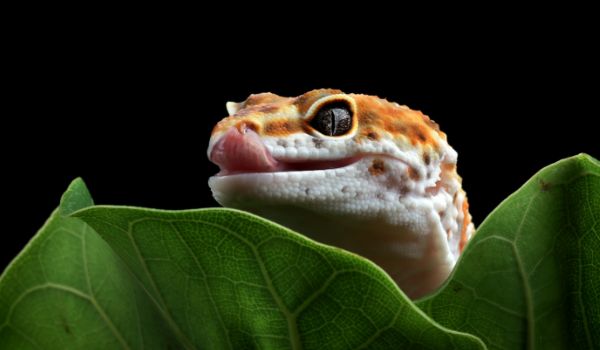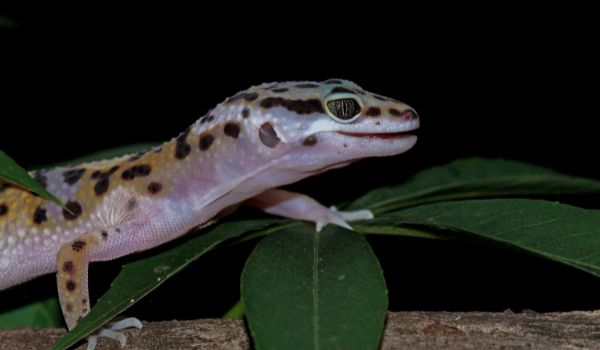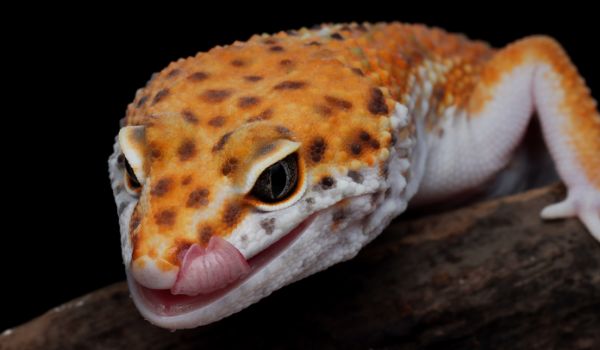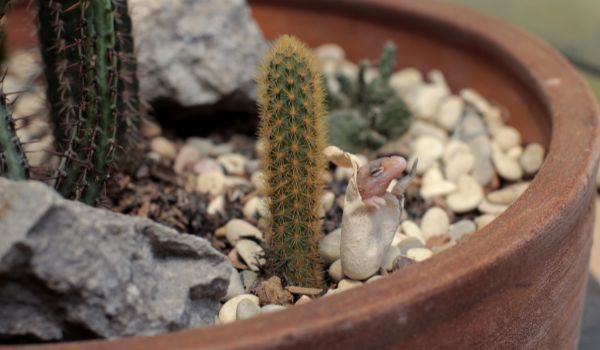Known for their Leopard-like spots, Leopard geckos are one of the most popular pet geckos, with Crested geckos being the second most popular. Though Leopard geckos originate from deserts and arid grasslands of Pakistan, Afghanistan, northwest India, and Iran, they have been captive-bred in the U.S. for over three decades. Today there are over a hundred different Leopard gecko morphs.
Whether you already have a Leopard gecko or you are just thinking about getting one, here are some interesting Leopard gecko facts.
Interesting Leopard Gecko Facts
1. They Are often Called Friendly Dinosaurs
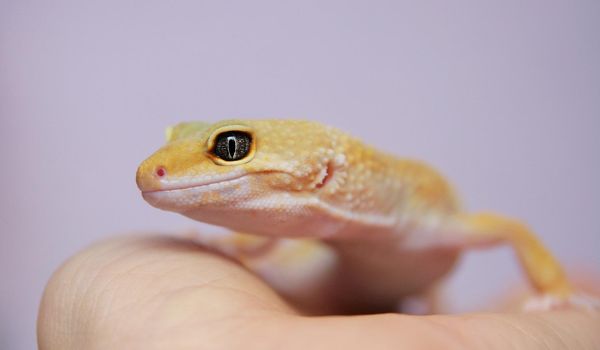
Known for their friendly nature, domesticated Leopard geckos are often called “friendly dinosaurs.” However, you should keep in mind that Leopard geckos don’t like to be held. So acting as friendly dinosaurs, they may tolerate petting sessions, but if it gets overwhelming, they may bite their handlers. But worry not—their bites usually do not hurt.
2. They Have Hole-Like Ears
Leopard geckos have simple hole-like ears on either side of their head. If you peek, you will be able to spot the eardrums, and if your Leo stays still, you might be able to see through their head to the other side. Using their ears, Leopard geckos are able to determine where the sound is coming from. Stanford engineers have even developed tiny light detectors that work just like Leopard gecko ears.
3. They Have Moveable Eyelids
Where most geckos do not have eyelids, Leopard geckos have real functional (moveable) eyelids. In fact, their scientific name is based on the presence of eyelids and their spotted skin. The scientific name of the Leopard gecko is “Eublepharis Macularius.” Where “Eublepharis” means “good eyelids,” “Macular” means “spotted” in Latin. Most other kinds of geckos have clear (see-through) eyelids.
4. They Are Cold-Blooded
Leopard geckos are cold-blooded creatures. They cannot control their body temperatures by physiological means and thus needs heat from external sources. They come from a hot environment of deserts and arid grasslands. But when they get too hot, they either rest in shady areas or move into rock cervices or in burrows, where moisture is high.
When kept at home, Leopard geckos must be provided with an appropriate thermal gradient of about 75° F to 88° F during the day and 70°F to 75°F during the night.
5. They Lack Sticky Pads
Despite being a lizard, Leopard geckos are clumsy climbers. This is because Leopard geckos lack the characteristic sticky pads on their toes, unlike most other lizards and geckos like Crested and Turkish geckos. Instead, they have tiny claws that allow them to climb on small rocks and branches of trees.
In the domestic Leopard gecko habitat, you will never find your gecko climbing on the glass wall of its vivarium. That said, you still have to put a lid on the leopard gecko tank as Leos could climb on the vertical space that you have created for them. Tiny claws also help Leopard geckos dig burrows.
6. They Eat Their Shed Skin
Like most lizards, Leopard geckos shed their skin regularly. This is not odd at all; what is odd is the fact that they eat their shed skin. Leopard geckos consume their shed skin for a few reasons:
- Shedding old skin and growing a new one is a lot of work and nutritionally exhaustive. So, they eat their shed to compensate for the nutrition expended.
- In the wild, shed skin could give predators an idea that a Leo is around. So, they consume their shed to the skin to remove signs of their presence and ward off predators.
7. They Have an Interesting Tail
The fat tail of Leopard geckos is very interesting. Besides acting as an energy reserve, there are many other interesting things about the Leopard gecko tail.
- Acting as an energy reserve (fat store), it allows Leos to live off it when the food is scarce.
- With their caudal autonomy, Leopard geckos tend to drop their tails when chased by a predator. The detached tail distracts the predator and allows Leos to flee away.
- Their detached tail could wriggle for as long as 30 minutes and distract the predator.
- When the threat subsides, the Leopard gecko may return to eat their detached tail to regain the lost fat supply.
- Like most lizards, Leopard geckos can regenerate their lost tails, but the new tail is never the same as the original one—they are smaller and bulbous.
- Feeling threatened, they wave their tails, and in the excitement of hunting and mating, they rattle their tails like rattlesnakes.
8. They Change Color as They Age
Leopard geckos are born with bands (stripes) of colors on their body. However, as baby leopard geckos age, stripes are converted into spots. Baby Leos shed around twice per month, and their pattern/spots change a bit with each shedding phase. The conversion of stripes into spots takes around a year.
Eventually, as Leos enter seniorhood, their leopard-like spots start fading and become mostly one-colored. Some Leopard geckos retain their spots around the face, on the tail, and neck region even during old age.
9. There Are Over 100 Leopard Gecko Morphs

Normally Leopard geckos are yellow with black spots. But with decades of selective breeding, they come in a wide range of colors and patterns today. There are over 100 known Leopard gecko morphs, and many more keep surfacing with passing time. Black Night, Albino, Lavender, and Mack Snow Leopard geckos are some of the most popular Leopard gecko morphs.
10. They have Around a 100 Teeth
Leopard geckos have around 100 teeth. They are polyphyodont, which means their teeth are continually replaced every 3 to 4 months throughout their lifetime. When baby Leopard geckos come into this world, they have a fully developed set of teeth.
Leopard geckos do have teeth, and they often bite their handler. But their bites rarely hurt. It feels like a pinch. Leos are not even able to pierce through the skin. Leopard geckos don’t really like to be held. They may tolerate it, but when it gets overwhelming, they tend to bite the handlers to end the handling session and free themselves.
11. They Are Nocturnal
Leopard geckos are nocturnal, but they can adapt to their owners’ daytime activity and routine in captivity. If you notice, you will see that your Leo is most active during the twilight hours—at dawn and dusk. Given that Leopard geckos are nocturnal, you should never leave the basking light on through the night. For more, check out the guide about the Leopard gecko lighting setup.
12. They Make Many Interesting Noises
Trying to express their mood, Leopard geckos make many interesting sounds. They chirp, squeak, click, scream, and bark. Yes, you read that right; Leos make barking sounds as well. Barking is not a common Leopard gecko sound; they only make it when they are extremely stressed. So, when you hear your Leo making the barking sound, try to find out and remove whatever is stressing or annoying it.
13. They Can Live Well Beyond 20 Years
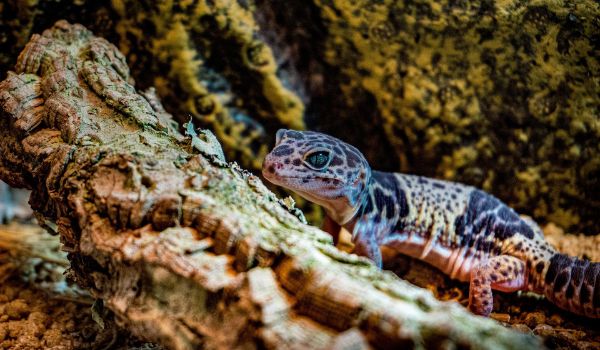
Leopard geckos are hardy creatures. When Leopard geckos are housed properly with suitable thermal gradient, humidity levels, friendly substrate, and fed a healthy Leopard gecko diet, they can go on to live up to 20 years. The oldest Leopard gecko was a male who had a lifespan of 28 years.
14. They Have a Special Sense of Taste
Leopard geckos have Jacobson’s organ in their mouth that allows them to have a special sense of taste. It is located on the roof of their mouth. They often extend their tongues out of their mouths to learn more about their environment by smelling and tasting the chemical molecules in their surroundings. They use this skill to track and hunt prey in the vicinity.
15. They Have Temperature-Dependent Sex Determination
Geckos lack sex chromosomes. Their sex is determined by the incubation temperature. When Leopard gecko eggs are incubated at 26° C, the sex is 100% female. For 30° C, it is 70%) and for 34° C, it is 95%. Similarly, hatchlings are mostly male (75%) when incubated at 32.5° C.

